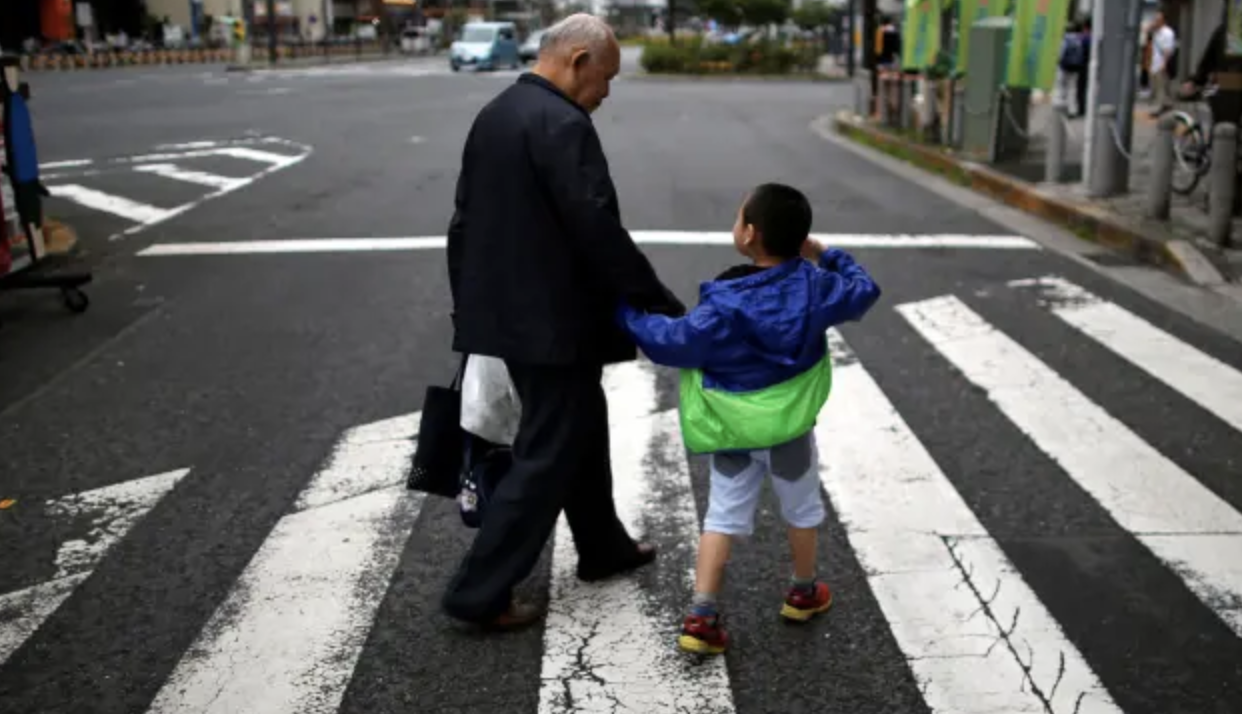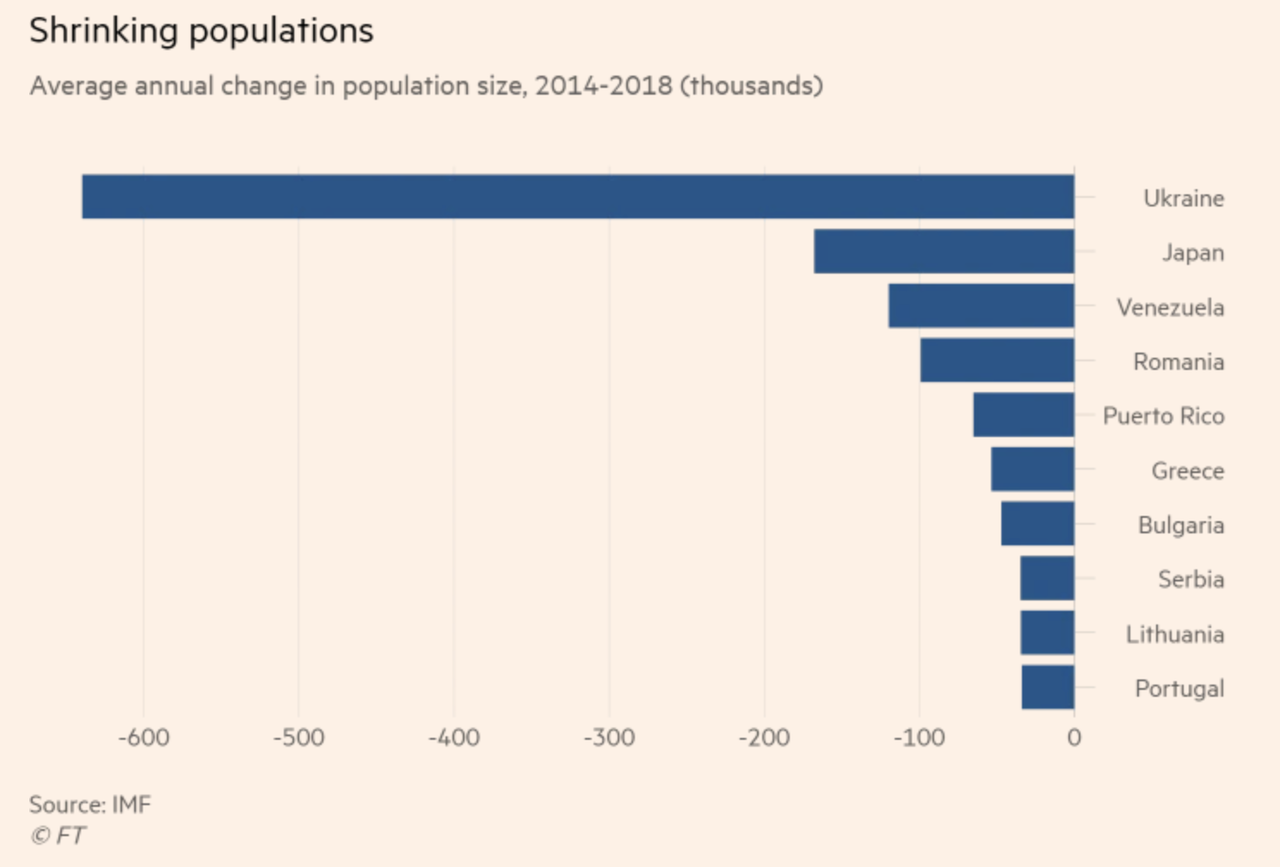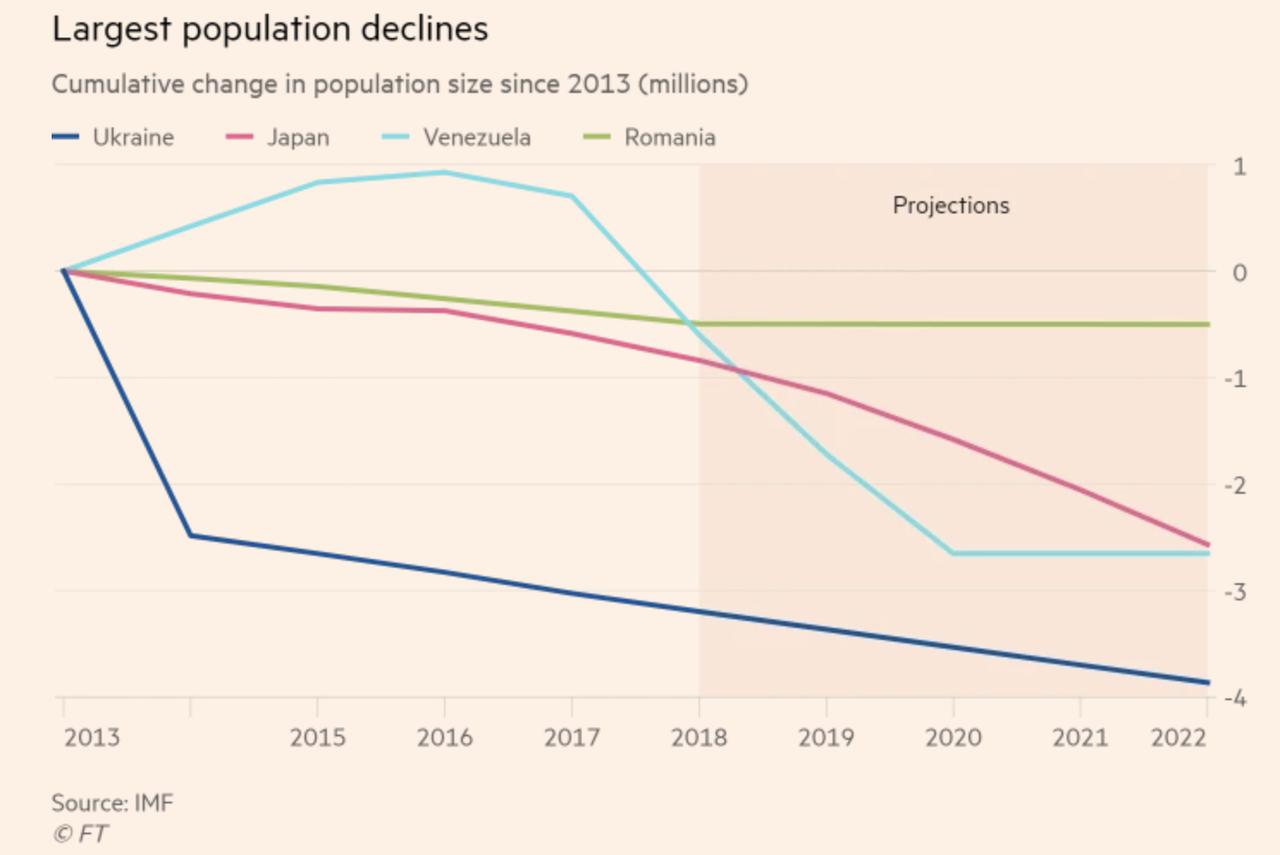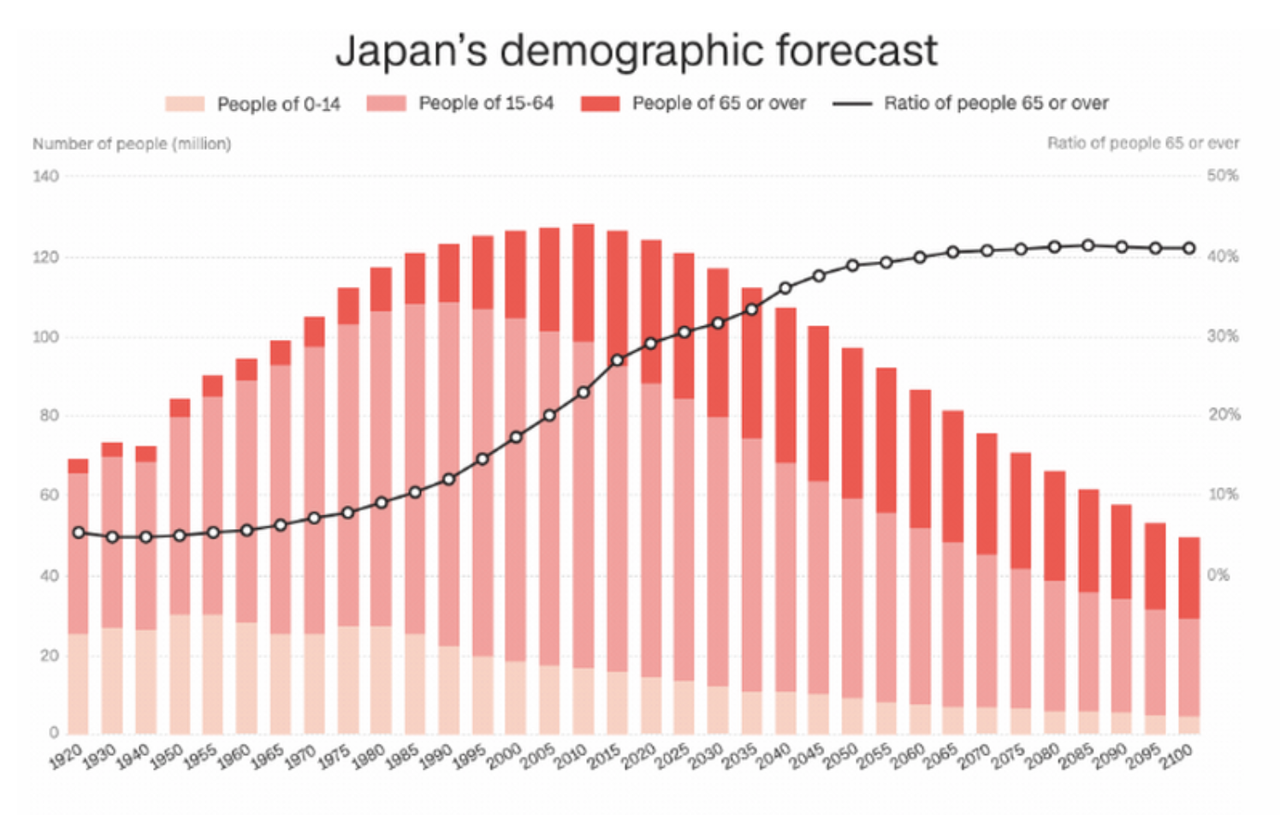As we’ve reported, the greatest long-term threat to the Japanese economy is a profusion of sexless men – termed “soshoku danshi”, or herbivores, the modern parlance – who are more interested in anime and used panty vending machines than they are in living, breathing women.
But although Japan’s increasingly sexless society has led to the lowest birthrate in the developed world, sending the number of live births below 1 million last year, the lowest level in modern history, it’s the rising number of deaths that are causing the rate at which Japan’s population is shrinking to accelerate.
According to the FT, those born during a pre-WWII baby boom, which was fostered by the Imperial government during the run-up to the war, are rapidly reaching the end of their lives. And the death rate in the country, which last year outstripped the number of births by roughly 430,000, is expected to accelerate through 2030.
“The reason Japan’s population is now falling so fast is not the low birth rate but rather an increase in the number of deaths,” said Akihiko Matsutani, professor emeritus in applied economics at the National Graduate Institute for Policy Studies.
[…]
Japan had a baby boom before the second world war because of military pressure to increase the birth rate, he added. “Those people are now reaching the age of passing away,” said Prof Matsutani.
Even Prime Minister Shinzo Abe’s decision to loosen restrictions on immigration, a controversial subject in Japan, wasn’t enough to offset the number of deaths: Japan recorded a record net inflow of more than 161,000 migrants, but the overall pace of decline still hit a new high of minus 0.21%.
The decelerating pace of population decline has made Japan, once a thriving empire and global economic powerhouse, the country with the highest rate of natural population decline in the world. Some European countries, including Bulgaria and Romania, are seeing their populations decline at a faster rate, but this is mostly driven by immigration. The pace at which Japan’s population is declining has even outpaced Venezuela, even as widespread starvation and societal collapse have driven millions of people out of the country over the past five years.
Courtesy of the FT
Since the beginning of the devastating economic crisis currently gripping Venezuela, prosperous Japan, which still boasts the world’s third-largest economy, has lost about as many people.
Courtesy of the FT
Not unlike the US, where the migration of people to urban centers has caused the rural population to shrink, Japan’s demographic shifts are hitting rural areas particularly hard.
In some places, like the northern prefectures of Aomori and Akita, the population is declining at a rate of 1% per year, leaving some villages devoid of people under the age of 70. These towns feature “shutter streets” of shops that never open.
Even after 2030, when the rate of population decline is expected to level off as most of the older generation will have already died off, growth will still likely be negative thanks to low birth rates.
And again, these low birth rates are driven by the fact that Japanese culture puts such an intense emphasis on economic success in the workplace, that men who fail to achieve it feel too ashamed to try and court a woman.
By 2050, the National Institute of Population and Social Security Research projects that by the middle of the century, Japan will be losing about 900,000 people a year – roughly the population of Austin, Texas. By 2100, projections suggest Japan’s population will shrink to 50 million – its level from a century ago.
In 2018, there were 944,146 births through October, compared with 1,368,632 deaths. By comparison, in 2011, there were 1,073,663 births and 1,256,387 deaths during the same period.
This has triggered a fraught debate about whether Abe, who has relaxed rules for guest workers, leading Japan’s foreign born population to boom to 2.2 million people in 2018, also a modern record, should start offering a path to permanent residency for foreign workers and – crucially – their families.
That could fill in the economic gaps that might strain Japan’s social services in the coming decades as the country struggles to care for its booming population of senior citizens.
Of course, if coaxing young Japanese men and women to have procreative sex wasn’t Panda-level difficult, then the country wouldn’t have this problem to begin with. Even some Japanese couples are sexless as more men devote themselves to their hobbies, while women are becoming more devoted to work. The last Japanese baby boom was spurred by pressure from the Imperial government. But in the modern era, what can the government do to change a culture that has made it acceptable to be an “herbivore?”
What’s the solution? Ban hentai and tentacle porn? Take away their “Waifu pillows?”
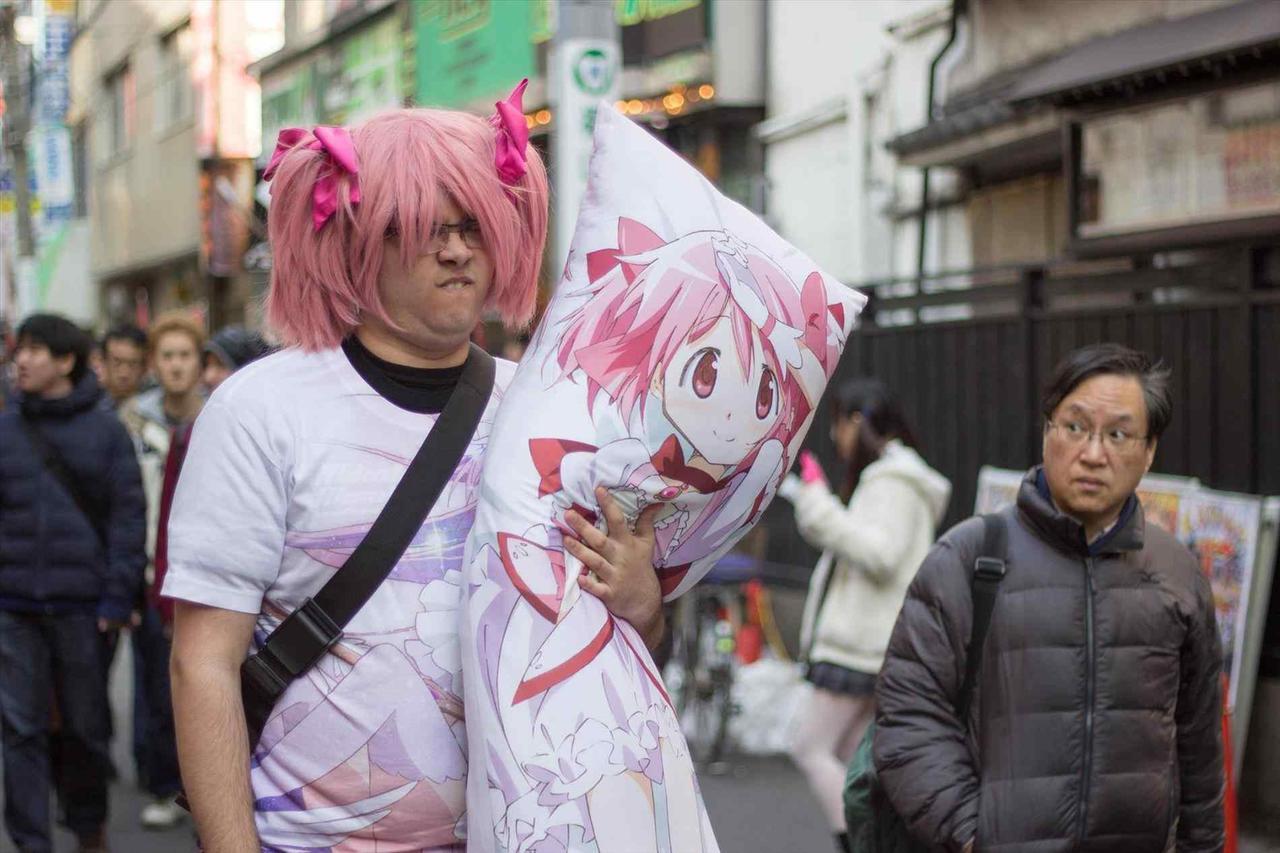
Or maybe high levels of soy in their diet combined with the frosty sex relations of the #MeToo era have created a population of ultra-feminized men afraid to make the first move?
via ZeroHedge News http://bit.ly/2Dd7s5o Tyler Durden
